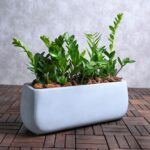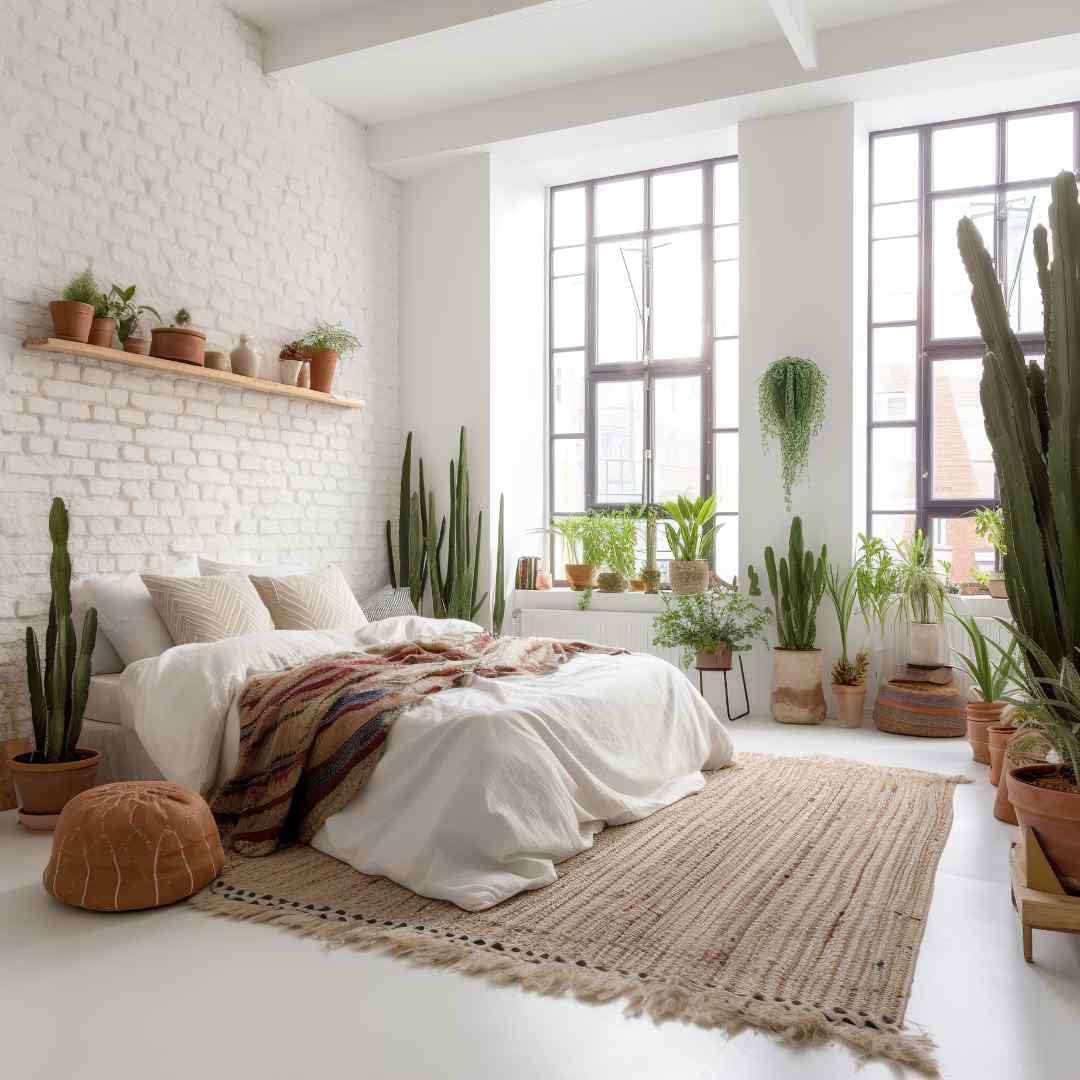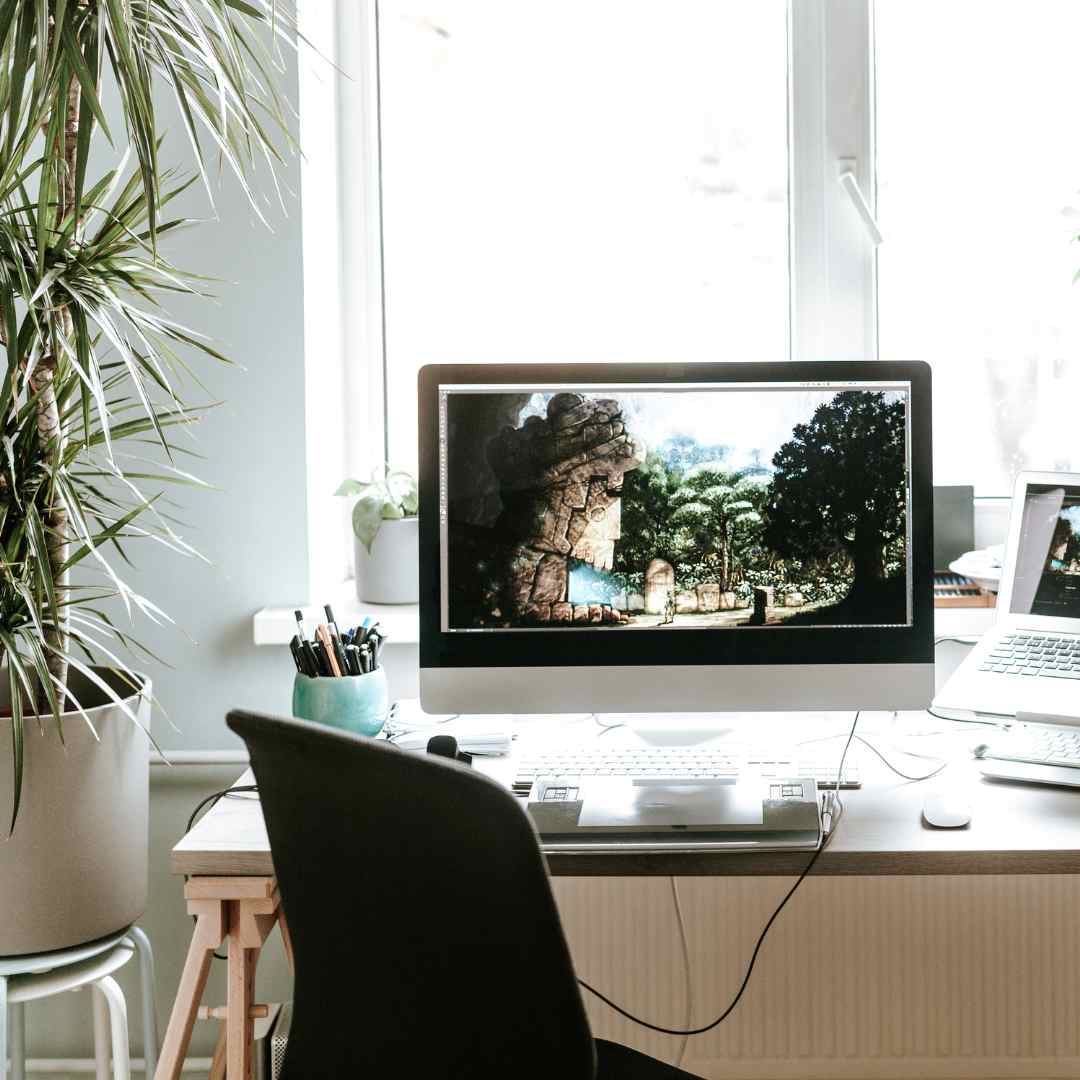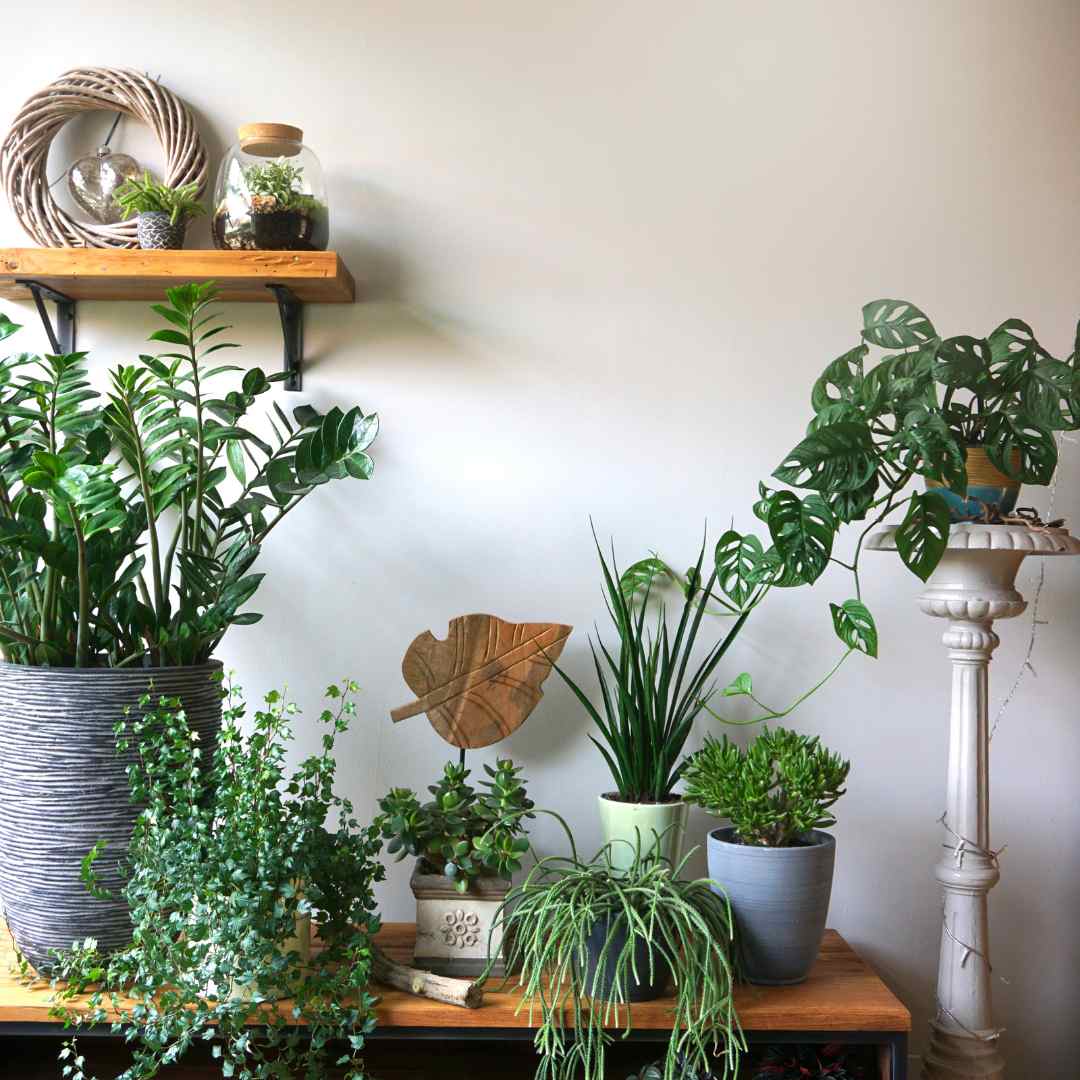Your plants will show up fresh, vibrant, and pest-free—guaranteed.
Not feeling it? We’ve got your back! Snap a pic and reach out within 14 days, and we’ll replace your plant—no hassle, no fuss.
Read more about our Freshness Guarantee.

AED40 – AED475
The Zamioculcas Zamiifolia (ZZ Plant), known for its striking glossy green leaves and low-maintenance care, is the perfect addition to any indoor space. Available in three heights—30-40 cm, 60-70 cm, and 80-100 cm—this resilient plant brings a touch of modern elegance to homes and offices alike. You can choose from three stylish pot options: a sleek white rectangular pot, a standard nursery pot, or a sophisticated white ceramic pot, making it easy to match your décor. Whether you’re looking for a compact accent plant or a statement piece, the ZZ Plant is a timeless choice that thrives with minimal attention.
Your plants will show up fresh, vibrant, and pest-free—guaranteed.
Not feeling it? We’ve got your back! Snap a pic and reach out within 14 days, and we’ll replace your plant—no hassle, no fuss.
Read more about our Freshness Guarantee.
| Area | Delivery Days |
|---|---|
| Abu Dhabi | Everyday |
| Abu Dhabi (Ruwais; Al Ghayatil; Almira; Madinat Zayid) | Thursday only |
| Ajman | Monday |
| Ajman (Masfoot; Muzairah) | Monday only |
| Dubai | Everyday |
| Fujairah | Monday |
| Ras Al Khaima | Everyday |
| Ras Al Khaima (Al Mainau) | Monday only |
| Sharjah | Tuesday |
| Sharjah (Kalba; Khor Fakan) | Thursday |
| Umm Al Quwain | Everyday |
We currently do not deliver to the following unserviced areas:
If you prefer to pick up your plant in person, you are welcome to visit our location in Mussaffah, Abu Dhabi. Please contact us via WhatsApp, and our team will do their best to prepare your order in advance of your arrival.
The ZZ Plant (Zamioculcas zamiifolia), known for its glossy, dark green leaves and upright growth, is one of the most resilient and low-maintenance houseplants available. Native to the tropical regions of East Africa, including Kenya and Tanzania, this plant is exceptionally tolerant of low light, drought, and varying humidity levels, making it perfect for homes and offices, particularly in the UAE. Known for its ability to thrive with minimal attention, the ZZ Plant has become a popular choice for those seeking an attractive, low-care indoor plant. This comprehensive guide will provide all the care tips needed to ensure your ZZ Plant flourishes in the UAE’s unique climate.
Before diving into care requirements, let’s explore the key characteristics of the ZZ Plant:
The ZZ Plant is loved for its attractive, waxy leaves and ability to thrive in almost any indoor environment. It is particularly known for tolerating low light and infrequent watering, which makes it an ideal plant for homes and offices where maintenance might be inconsistent.
While the ZZ Plant thrives indoors, it can be placed outside on shaded patios or balconies during the cooler months. However, always keep it out of direct sunlight and protect it from extreme heat.
ZZ Plants can be propagated easily by division or through leaf cuttings.
The ZZ Plant (Zamioculcas Zamiifolia) is an outstanding choice for indoor environments in the UAE due to its resilience, low water needs, and adaptability to various light conditions. With minimal care, this plant can thrive in homes, offices, and other indoor spaces, providing beauty and improving air quality. By following this comprehensive care guide, you can ensure your ZZ Plant remains healthy, vibrant, and continues to grow for many years to come.
Whether you’re a novice or experienced plant owner, the ZZ Plant is a perfect addition to your collection, bringing a touch of greenery and modern elegance to any indoor space.
The ZZ Plant (Zamioculcas Zamiifolia) is a popular, hardy indoor plant known for its glossy, dark green leaves and low-maintenance care requirements. It’s a favorite for home and office spaces due to its ability to thrive in low light and its air-purifying qualities.
Caring for a Zamioculcas Zamiifolia is easy. It thrives in indirect, low to moderate light and only needs watering when the soil is completely dry. ZZ Plants are drought-tolerant and can survive in less-than-ideal conditions, making them perfect for beginners or those with a busy lifestyle.
Water your ZZ Plant when the top 2-3 inches of soil are dry. Typically, this is every 2-3 weeks, but it can vary depending on the indoor environment. Avoid overwatering, as ZZ Plants are susceptible to root rot.
Yes, one of the best features of Zamioculcas Zamiifolia is its ability to thrive in low-light conditions, making it perfect for dimly lit rooms or offices. However, it will grow faster in bright, indirect light.
Yes, ZZ Plants are known to remove toxins from the air, such as xylene, toluene, and benzene, making them a great option for improving indoor air quality.
No, Zamioculcas Zamiifolia is toxic to pets if ingested. If you have cats or dogs, it’s recommended to place the plant in an area out of their reach to avoid any health issues.
Under ideal conditions, the Zamioculcas Zamiifolia can grow up to 3-4 feet tall indoors. Its slow growth makes it a manageable plant for most spaces, and it rarely requires pruning.
ZZ Plants prefer well-draining potting soil. A cactus or succulent soil mix works well, or you can use a standard houseplant mix combined with perlite to improve drainage.
Yes, Zamioculcas Zamiifolia can be propagated by leaf cuttings or division of the root rhizome. It may take several weeks to months for new growth to appear, but it’s a simple and rewarding process.
The ZZ Plant thrives in temperatures between 18°C and 30°C (65°F to 85°F). It can tolerate a range of indoor conditions, but avoid placing it near cold drafts or air conditioning vents.
Overwatering can cause yellowing leaves and mushy, rotting stems. If this happens, reduce watering and check for proper drainage. ZZ Plants prefer dry soil and can tolerate drought better than excess water.
Fertilizing is not strictly necessary for a ZZ Plant, but feeding it with a balanced houseplant fertilizer once every 2-3 months during the growing season (spring and summer) can help encourage growth.
Repot your ZZ Plant every 2-3 years or when it outgrows its pot. Choose a container 1-2 inches larger in diameter than the current one and use well-draining soil. Repotting gives the roots more space and helps the plant continue growing healthily.
ZZ Plants can be placed outdoors in warm climates with filtered light. However, they should not be exposed to direct sunlight for extended periods, as this can burn their leaves. Bring them inside during colder months, as they are not frost-tolerant.
The most common problems are overwatering and poor drainage, leading to root rot. Yellowing leaves can indicate overwatering, while wrinkled leaves suggest underwatering. These plants are generally pest-resistant but occasionally can attract spider mites or mealybugs.
ZZ Plants are slow-growing, especially in low light conditions. With proper care, you can expect them to grow about a few inches per year. In brighter light, they may grow more rapidly.
Yellow leaves usually indicate overwatering. Make sure the soil is allowed to dry out between waterings, and always use a pot with drainage holes to prevent water from pooling around the roots.
With proper care, a ZZ Plant can live for many years, making it a long-lasting addition to your indoor plant collection. Its resilience to neglect and low maintenance needs contribute to its long lifespan.
To keep the leaves looking shiny and dust-free, gently wipe them down with a damp cloth. This helps the plant absorb more light and keeps it looking its best.
Zamioculcas Zamiifolia is an ideal plant for home or office environments due to its ability to thrive in low light, require minimal care, and improve air quality. Its elegant, glossy leaves also add a stylish touch to any space.
{
“@context”: “https://schema.org”,
“@type”: “FAQPage”,
“mainEntity”: [
{
“@type”: “Question”,
“name”: “What is a ZZ Plant (Zamioculcas Zamiifolia)?”,
“acceptedAnswer”: {
“@type”: “Answer”,
“text”: “The ZZ Plant (Zamioculcas Zamiifolia) is a hardy, low-maintenance indoor plant known for its glossy, dark green leaves. It thrives in low light and requires minimal care. Learn more at https://adplants.com/product/zamioculcas-zamiifolia-zz-plant/”
}
},
{
“@type”: “Question”,
“name”: “How do I care for a ZZ Plant (Zamioculcas Zamiifolia)?”,
“acceptedAnswer”: {
“@type”: “Answer”,
“text”: “ZZ Plants require low to moderate indirect light and infrequent watering when the soil is completely dry. Learn more at https://adplants.com/product/zamioculcas-zamiifolia-zz-plant/”
}
},
{
“@type”: “Question”,
“name”: “How often should I water my ZZ Plant (Zamioculcas Zamiifolia)?”,
“acceptedAnswer”: {
“@type”: “Answer”,
“text”: “Water your ZZ Plant every 2-3 weeks when the top 2-3 inches of soil are dry. Learn more at https://adplants.com/product/zamioculcas-zamiifolia-zz-plant/”
}
},
{
“@type”: “Question”,
“name”: “Can the ZZ Plant survive in low light?”,
“acceptedAnswer”: {
“@type”: “Answer”,
“text”: “Yes, ZZ Plants thrive in low light conditions, making them perfect for dim rooms or offices. For best growth, use indirect light. Learn more at https://adplants.com/product/zamioculcas-zamiifolia-zz-plant/”
}
},
{
“@type”: “Question”,
“name”: “Does the ZZ Plant (Zamioculcas Zamiifolia) purify the air?”,
“acceptedAnswer”: {
“@type”: “Answer”,
“text”: “Yes, ZZ Plants help purify indoor air by removing toxins like benzene and xylene. Find more information at https://adplants.com/product/zamioculcas-zamiifolia-zz-plant/”
}
},
{
“@type”: “Question”,
“name”: “Is the ZZ Plant (Zamioculcas Zamiifolia) safe for pets?”,
“acceptedAnswer”: {
“@type”: “Answer”,
“text”: “ZZ Plants are toxic to pets if ingested. Keep them out of reach of pets to avoid any health risks. Learn more at https://adplants.com/product/zamioculcas-zamiifolia-zz-plant/”
}
},
{
“@type”: “Question”,
“name”: “How large does a ZZ Plant (Zamioculcas Zamiifolia) grow?”,
“acceptedAnswer”: {
“@type”: “Answer”,
“text”: “Indoors, ZZ Plants can grow up to 3-4 feet tall, making them suitable for various indoor settings. Learn more at https://adplants.com/product/zamioculcas-zamiifolia-zz-plant/”
}
},
{
“@type”: “Question”,
“name”: “What type of soil is best for ZZ Plant (Zamioculcas Zamiifolia)?”,
“acceptedAnswer”: {
“@type”: “Answer”,
“text”: “ZZ Plants prefer well-draining soil, such as a cactus or succulent mix, to prevent overwatering. Find more at https://adplants.com/product/zamioculcas-zamiifolia-zz-plant/”
}
},
{
“@type”: “Question”,
“name”: “Can I propagate my ZZ Plant (Zamioculcas Zamiifolia)?”,
“acceptedAnswer”: {
“@type”: “Answer”,
“text”: “Yes, ZZ Plants can be propagated by leaf cuttings or root division. It may take several weeks for new growth. Learn how at https://adplants.com/product/zamioculcas-zamiifolia-zz-plant/”
}
},
{
“@type”: “Question”,
“name”: “What temperature is ideal for ZZ Plant (Zamioculcas Zamiifolia)?”,
“acceptedAnswer”: {
“@type”: “Answer”,
“text”: “ZZ Plants thrive in temperatures between 18°C and 30°C (65°F to 85°F). Avoid cold drafts or extreme heat. Learn more at https://adplants.com/product/zamioculcas-zamiifolia-zz-plant/”
}
},
{
“@type”: “Question”,
“name”: “How do I know if my ZZ Plant (Zamioculcas Zamiifolia) is overwatered?”,
“acceptedAnswer”: {
“@type”: “Answer”,
“text”: “Signs of overwatering include yellowing leaves and mushy stems. Ensure the pot has good drainage and reduce watering frequency. Learn more at https://adplants.com/product/zamioculcas-zamiifolia-zz-plant/”
}
},
{
“@type”: “Question”,
“name”: “Do I need to fertilize my ZZ Plant (Zamioculcas Zamiifolia)?”,
“acceptedAnswer”: {
“@type”: “Answer”,
“text”: “ZZ Plants can benefit from occasional fertilization during the growing season, using a balanced houseplant fertilizer every 2-3 months. Learn more at https://adplants.com/product/zamioculcas-zamiifolia-zz-plant/”
}
},
{
“@type”: “Question”,
“name”: “How do I repot my ZZ Plant (Zamioculcas Zamiifolia)?”,
“acceptedAnswer”: {
“@type”: “Answer”,
“text”: “Repot your ZZ Plant every 2-3 years or when it outgrows its pot, using a slightly larger container with well-draining soil. Find more tips at https://adplants.com/product/zamioculcas-zamiifolia-zz-plant/”
}
},
{
“@type”: “Question”,
“name”: “Can ZZ Plants be placed outdoors?”,
“acceptedAnswer”: {
“@type”: “Answer”,
“text”: “ZZ Plants can be placed outdoors in warm, shaded areas but should be protected from direct sunlight. Bring them inside during colder months. Learn more at https://adplants.com/product/zamioculcas-zamiifolia-zz-plant/”
}
},
{
“@type”: “Question”,
“name”: “What are the common problems with ZZ Plant (Zamioculcas Zamiifolia)?”,
“acceptedAnswer”: {
“@type”: “Answer”,
“text”: “Common issues include yellowing leaves from overwatering and root rot from poor drainage. ZZ Plants are otherwise hardy and resistant to pests. Learn more at https://adplants.com/product/zamioculcas-zamiifolia-zz-plant/”
}
},
{
“@type”: “Question”,
“name”: “How fast does a ZZ Plant (Zamioculcas Zamiifolia) grow?”,
“acceptedAnswer”: {
“@type”: “Answer”,
“text”: “ZZ Plants are slow-growing and may take a few years to reach their full height. Brighter light may accelerate growth. Learn more at https://adplants.com/product/zamioculcas-zamiifolia-zz-plant/”
}
},
{
“@type”: “Question”,
“name”: “Why is my ZZ Plant (Zamioculcas Zamiifolia) turning yellow?”,
“acceptedAnswer”: {
“@type”: “Answer”,
“text”: “Yellow leaves usually indicate overwatering. Allow the soil to dry out and reduce watering. Learn more at https://adplants.com/product/zamioculcas-zamiifolia-zz-plant/”
}
},
{
“@type”: “Question”,
“name”: “What is the lifespan of a ZZ Plant (Zamioculcas Zamiifolia)?”,
“acceptedAnswer”: {
“@type”: “Answer”,
“text”: “With proper care, ZZ Plants can live for many years, making them a durable and long-lasting indoor plant. Learn more at https://adplants.com/product/zamioculcas-zamiifolia-zz-plant/”
}
},
{
“@type”: “Question”,
“name”: “How do I clean the leaves of my ZZ Plant (Zamioculcas Zamiifolia)?”,
“acceptedAnswer”: {
“@type”: “Answer”,
“text”: “Clean the leaves by gently wiping them with a damp cloth to remove dust and enhance light absorption. Learn more at https://adplants.com/product/zamioculcas-zamiifolia-zz-plant/”
}
},
{
“@type”: “Question”,
“name”: “Why should I choose a ZZ Plant (Zamioculcas Zamiifolia) for my home


We pride ourselves on offering an unbeatable selection of plants, from trendy succulents to lush tropicals and everything in between. At adplants, you are bound to find the perfect match

Connect with knowledgeable plant specialists via live video chat to receive personalized advice and troubleshooting tips for your indoor greenery. Get the help when you need it the most.

Say hello to timely reminders that ensure your plants receive the nutrients they need to flourish. Get personalized fertilization schedules for each of your plants right into your inbox.

At AdPlants, quality is our top priority. Each plant in our collection is handpicked by our team of expert horticulturists, ensuring that only the healthiest and most vibrant specimens make it to your doorstep.
See Us On the green side
Get up close with lush greenery and pick the perfect plant for your vibe—home or office!
© 2005 – 2025. Umm Al Salsal Trading Flowers and Indoor Plants. All Rights Reserved.
